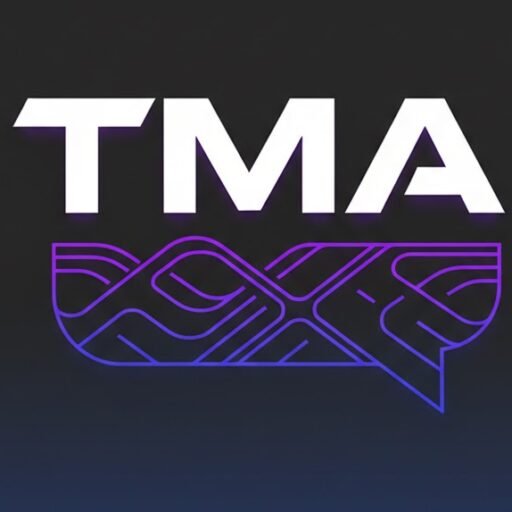Market Pulse
October 31, 2025 – The promise of Web3 has always revolved around decentralization, censorship resistance, and user ownership. Yet, as the industry matures, a fundamental paradox persists: many supposedly decentralized applications (dApps) remain vulnerable to outages originating from centralized cloud infrastructure providers. When a major cloud service like AWS, Google Cloud, or Microsoft Azure experiences downtime, the ripple effects can cripple dApps, exposing a critical vulnerability in Web3’s foundational claims.
The Centralized Underbelly of ‘Decentralized’ Web3
While the underlying blockchain networks are distributed and resilient, the front-end interfaces, API layers, and off-chain data processing components of many popular dApps frequently reside on traditional centralized cloud servers. Developers often opt for these services due to their scalability, ease of deployment, robust tooling, and competitive pricing – benefits that nascent decentralized alternatives have struggled to match consistently. This reliance creates an inherent contradiction: a decentralized ledger is only as accessible as its most centralized point of failure.
The core philosophy of Web3 aims to eliminate single points of control and failure. However, practical implementation often compromises this ideal. From user interfaces that interact with smart contracts to critical indexing services and even some oracle networks, significant portions of the ‘decentralized’ user experience are, in reality, tethered to the very centralized systems Web3 seeks to supersede. This architectural compromise can lead to frustrating downtime for users and significant operational challenges for developers, directly impacting the perceived reliability of the Web3 ecosystem.
Major Cloud Providers and Their Outage Risks
The global cloud computing market is dominated by a handful of giants. While these providers offer unparalleled infrastructure, they are not immune to technical glitches, human error, or even natural disasters. When an outage occurs, the consequences for dependent dApps can be severe and far-reaching, even if the blockchain itself continues to operate seamlessly:
- Inaccessible User Interfaces: Users may be unable to access dApp front-ends, preventing interaction with smart contracts.
- Delayed or Failed Transactions: API gateways or RPC nodes hosted on affected cloud infrastructure can become unresponsive, leading to transaction failures or significant delays.
- Data Processing Interruptions: Off-chain data analytics, indexing services, and other crucial background processes can halt, affecting real-time information and functionality.
- Oracle Vulnerabilities: Even some decentralized oracle networks, which feed real-world data to blockchains, might have components relying on centralized cloud services for data aggregation or distribution, potentially compromising their resilience.
- Liquidity Pool Disruptions: DeFi protocols relying on real-time data or front-end access can see liquidity providers unable to manage positions, leading to potential losses or arbitrage opportunities.
Such events erode user confidence and raise questions about the practical realization of true decentralization. They highlight that a truly resilient Web3 stack requires every layer, not just the blockchain, to adhere to decentralized principles.
Read Also: SBF Team Claims FTX Was Never Bankrupt, Citing Staggering $136 Billion in Assets
Erosion of Trust and Security Implications
Beyond mere inconvenience, reliance on centralized cloud services introduces potential security and censorship risks. A central entity, whether a cloud provider or a government, theoretically has the power to interfere with or disrupt access to applications hosted on its servers. This stands in stark contrast to the anti-censorship ethos of Web3. Furthermore, concentrated data storage on a few major cloud platforms could present larger targets for cyberattacks, even if the blockchain data itself remains secure.
Charting a Path Towards True Decentralization
The industry is not unaware of this challenge. Significant efforts are underway to develop truly decentralized alternatives for various layers of the Web3 stack. Projects focusing on decentralized storage (like IPFS and Arweave), distributed computing networks, and peer-to-peer data relay systems are gaining traction. The goal is to build an infrastructure where every component —from the front-end to the back-end —adheres to the same distribution and redundancy principles as the underlying blockchain.
However, achieving parity with centralized cloud providers in terms of cost, performance, and developer experience remains a substantial hurdle. The transition requires significant innovation, adoption, and a willingness from developers to embrace more complex, albeit more resilient, architectural patterns. The ideal is a Web3 where an application’s functionality remains unhindered, regardless of the status of any single centralized server farm.
Conclusion
As we navigate late 2025, the conversation around Web3’s true decentralization is more critical than ever. The paradox of decentralized applications relying on centralized cloud infrastructure is a stark reminder that the journey towards a truly robust, censorship-resistant, and permissionless internet is far from over. Addressing this fundamental architectural challenge is paramount for Web3 to fully deliver on its transformative promise and secure the trust of a broader user base in the years to come.
Pros (Bullish Points)
- Increased awareness of cloud dependency drives innovation towards fully decentralized infrastructure solutions.
- Challenges prompt the development of more robust, resilient, and censorship-resistant Web3 applications.
Cons (Bearish Points)
- The fundamental reliance on centralized cloud services undermines Web3's core promise of decentralization.
- Users face service disruptions and potential financial losses during cloud outages, eroding trust in dApps.
- Potential for centralized entities (cloud providers, governments) to control or interrupt access to 'decentralized' applications.
Frequently Asked Questions
What parts of Web3 applications typically rely on centralized cloud services?
Many dApp front-ends, API gateways, off-chain data indexing services, and some oracle components still utilize centralized cloud providers like AWS, Google Cloud, or Azure for hosting.
Why do dApp developers still use centralized cloud services despite Web3's decentralized ethos?
Developers often choose centralized cloud for its established scalability, reliability, cost-efficiency, and comprehensive tooling, which are currently harder to achieve with fully decentralized infrastructure solutions.
What are the industry's efforts to address this centralization issue?
There's an ongoing push to develop decentralized alternatives for hosting and computing, including solutions for decentralized storage (e.g., IPFS, Arweave) and distributed networks, aiming for a fully decentralized Web3 stack.






